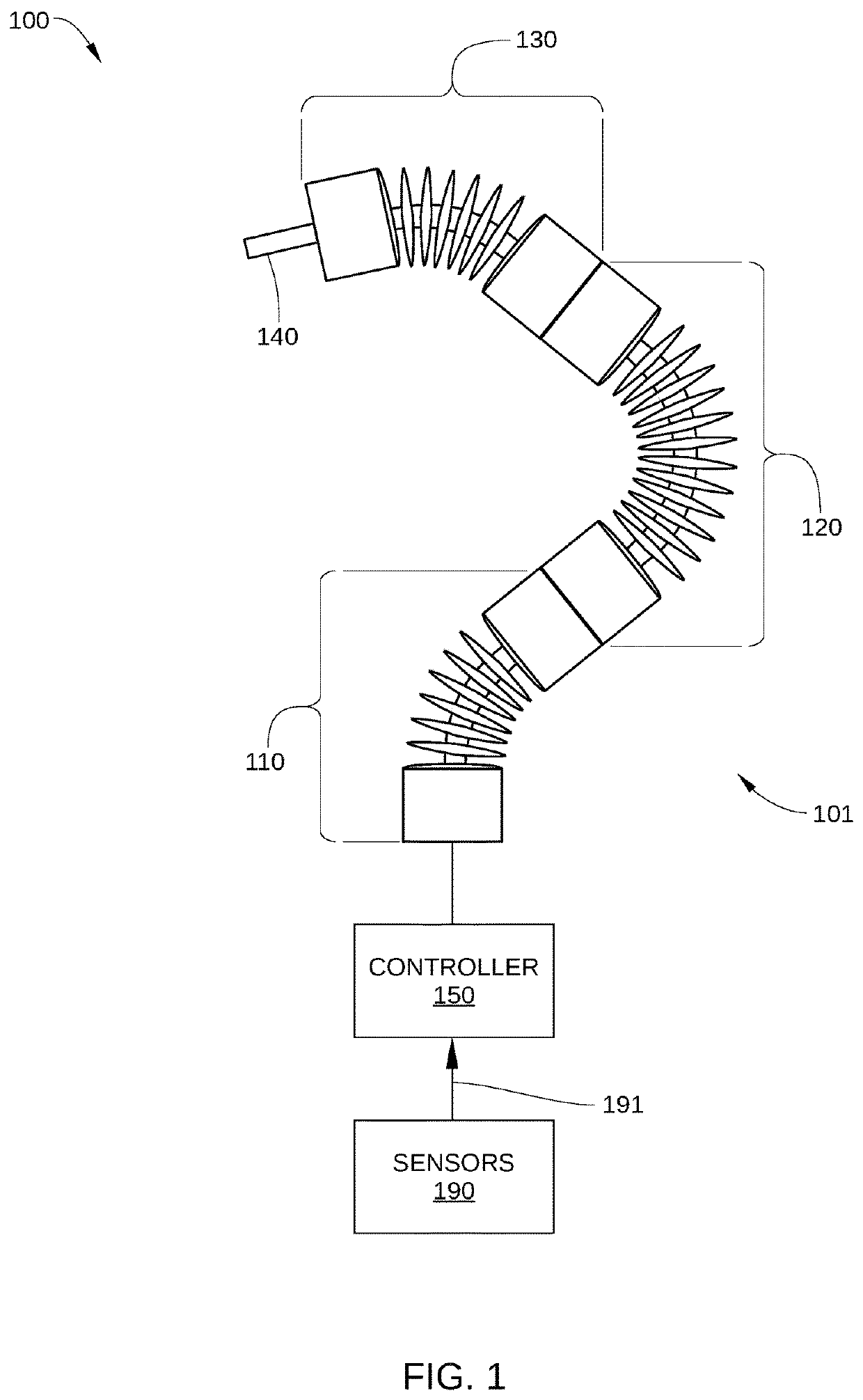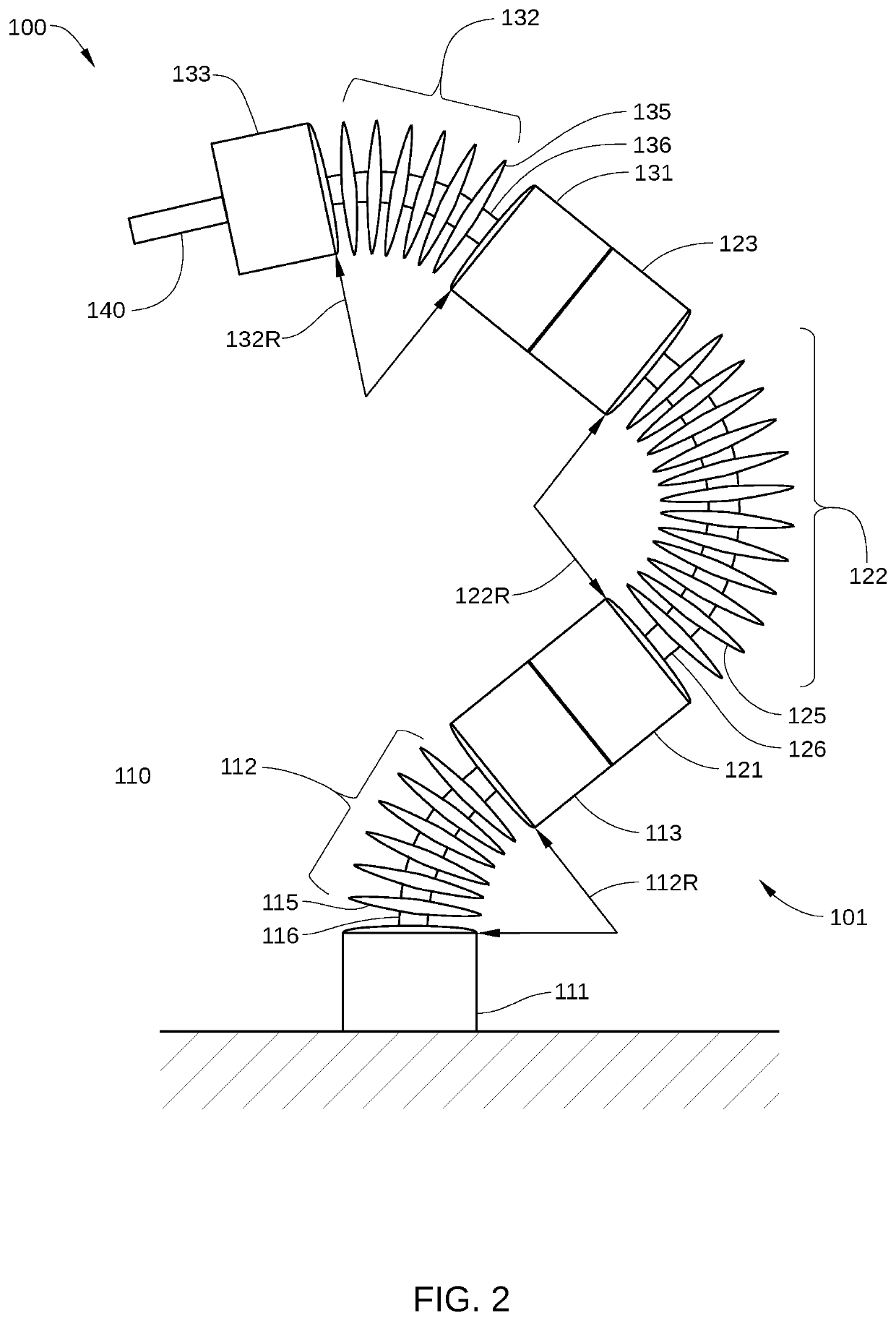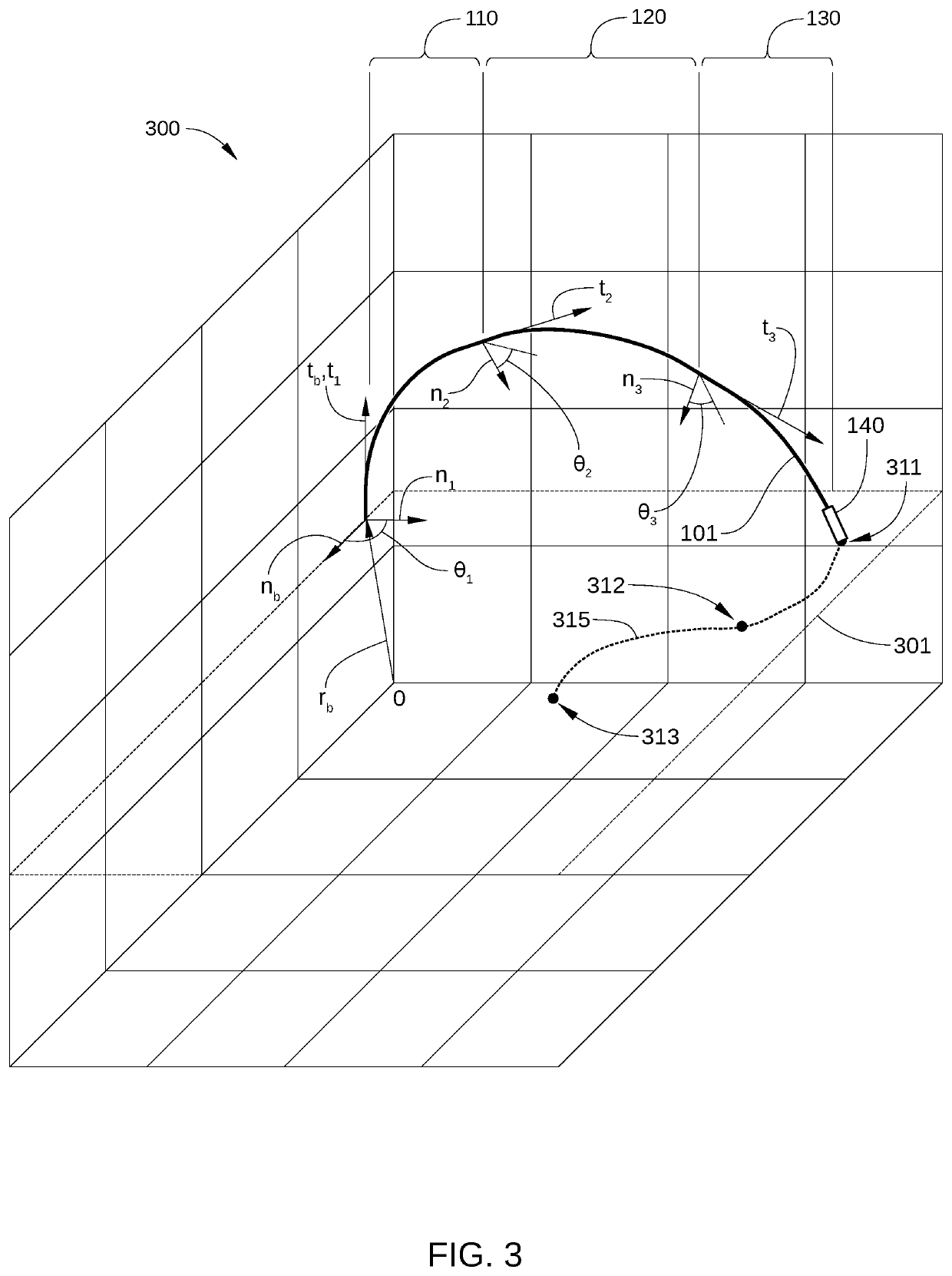Singularity-free kinematic parameterization of soft robot manipulators
a robot manipulator and singularity-free technology, applied in the field of computer science and robotics, can solve the problems of high precision, inability to apply continuum robot schemes, and human danger, and achieve the effect of less computational resources, convenient application, and fast performan
- Summary
- Abstract
- Description
- Claims
- Application Information
AI Technical Summary
Benefits of technology
Problems solved by technology
Method used
Image
Examples
Embodiment Construction
[0002]The various embodiments relate generally to computer science and robotics, and, more specifically, to singularity-free kinematic parameterization of soft robot manipulators.
Description of the Related Art
[0003]Robots are oftentimes employed for tasks that require high repetition, can be dangerous to humans, and / or require high-precision. For example, robots are frequently implemented in manufacturing applications and environments that are hazardous to humans. As a general matter, robots are machines that are automated or semi-automated, programmable, and capable of complex planar or three-dimensional movements. Many conventional robots are implemented with rigid components (e.g., actuators, manipulators, and end effectors), but, for improved dexterity, flexibility, and adaptability, continuum robots (also referred to as “soft robots”) have been developed.
[0004]Continuum robots typically include one or more joints that can bend continuously along a finite length. The design and ...
PUM
 Login to View More
Login to View More Abstract
Description
Claims
Application Information
 Login to View More
Login to View More - R&D
- Intellectual Property
- Life Sciences
- Materials
- Tech Scout
- Unparalleled Data Quality
- Higher Quality Content
- 60% Fewer Hallucinations
Browse by: Latest US Patents, China's latest patents, Technical Efficacy Thesaurus, Application Domain, Technology Topic, Popular Technical Reports.
© 2025 PatSnap. All rights reserved.Legal|Privacy policy|Modern Slavery Act Transparency Statement|Sitemap|About US| Contact US: help@patsnap.com



